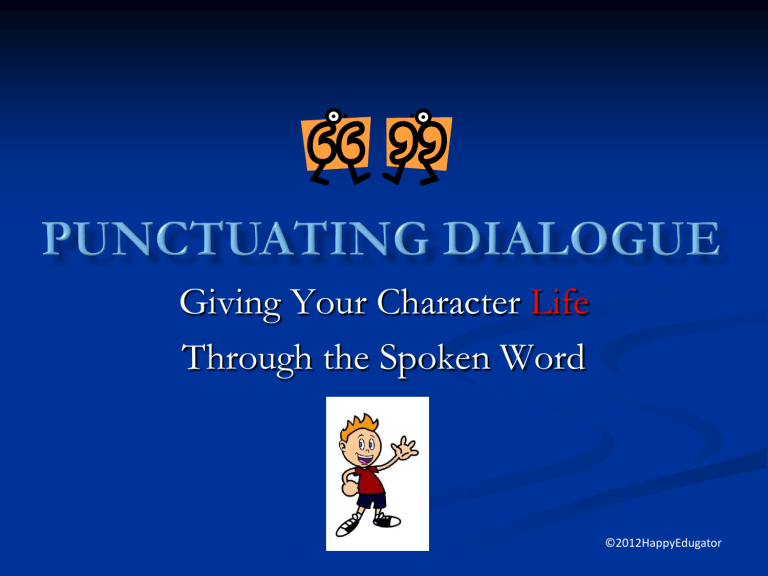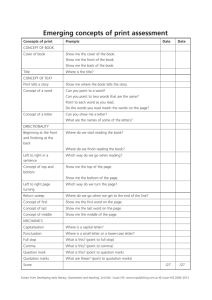
Giving Your Character Life Through the Spoken Word ©2012HappyEdugator Use quotation marks to enclose a direct quotation – a person’s exact words. Our team leader says, “I try to practice every day.” “Let’s go home,” Jeanne suggested. ©2012HappyEdugator A directly quoted sentence begins with a capital letter. Mrs. Talbot said, “Please get a pencil.” Kristina asked, “Is it my turn?” ©2012HappyEdugator Split dialogue When an expression identifying the speaker interrupts a quoted sentence, the second part of the quotation begins with a lowercase letter. “Will you take care of my lawn and pets,” asked Mr. Franklin, “while I’m on vacation next month?” * The expression identifying the speaker is called a speaker’s tag. ©2012HappyEdugator Split Dialogue If a quoted sentence is divided, a comma usually follows the first part and comes before the second part. “Oh,” Donna commented, “he’s probably just saying that because he’s never had a cat.” ©2012HappyEdugator Quote at the Beginning… If a quotation mark comes at the beginning of a sentence, a comma, question mark, or exclamation point usually follows it. “Dogs make better pets than cats do,” said Jared. “Have you ever had a cat?” Emily asked. “No, and I never will!” he replied. ©2012HappyEdugator Quote at the end… If a quotation comes at the end of a sentence, a comma usually comes before it. Terra asked, “What makes you say that?” ©2012HappyEdugator Punctuation inside Quotes A period or a comma should always be placed inside the quotation marks. “I can’t wait to see Shirley Caesar’s new video,” James said. “It’s supposed to come out next week.” ©2012HappyEdugator The Exception to the Rule A question mark or an exclamation point should be placed inside closing quotation marks when the quotation itself is a question or an exclamation. Otherwise, it should be placed outside. “What time will you be home from work, Mom?” asked Michael. Who said, “All the world’s a stage”? “Stop!” yelled the crossing patrol. What a surprise to hear Susana say, “We’re moving back to Puerto Rico in June”! ©2012HappyEdugator Don’t Be Afraid to Use Dialogue in Your Writing! Just be sure to use it thoughtfully. Make every word a character says count. Never overuse dialogue. It should be supplemental to the description, and not take over the whole composition.

